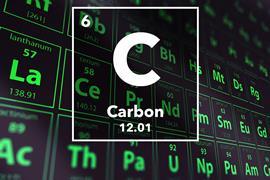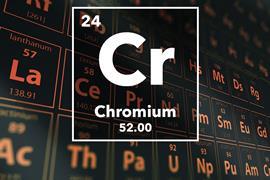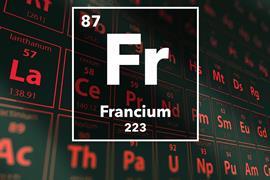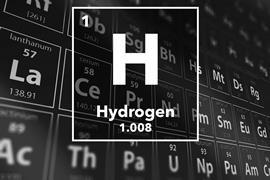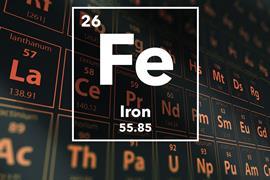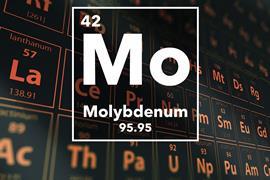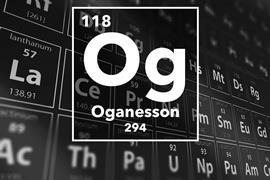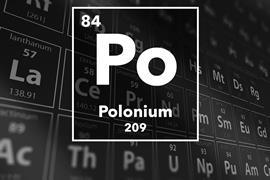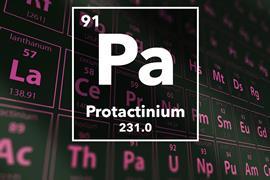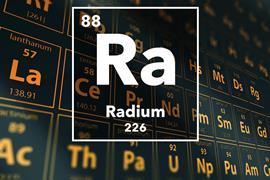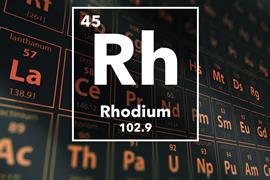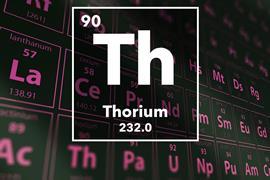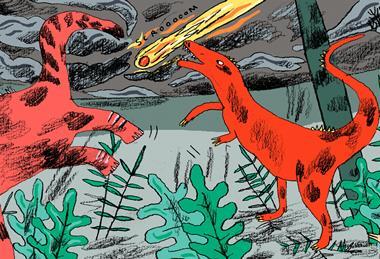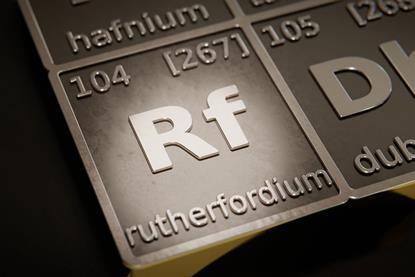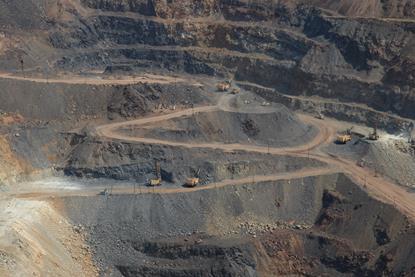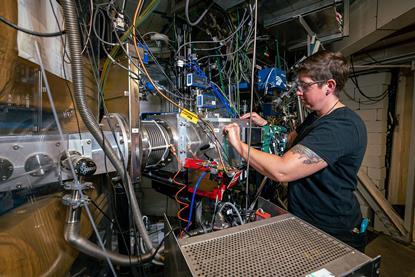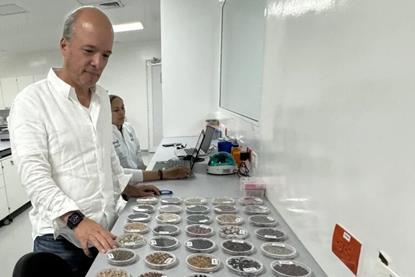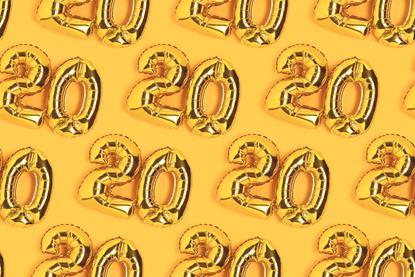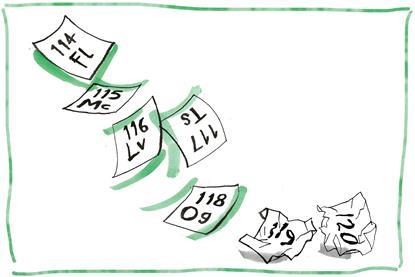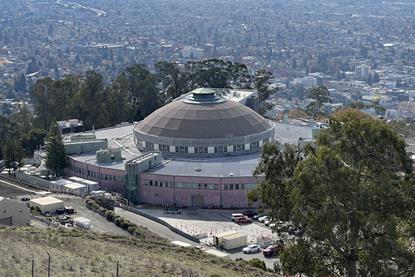Periodic table
In this collection we explore the history and significance of the periodic table. We cover its origins and evolution, from Dmitri Mendeleev’s groundbreaking arrangement to the modern periodic table’s organisation, its influence and role in science and culture, the discovery of new elements and element scarcity.
History
The father of the periodic table
Mike Sutton looks at how Mendeleev’s patience revealed periodicity in the elements
Primo Levi and the other periodic table
Author and chemist Primo Levi was born 100 years ago this July. Philip Ball looks at his chemical and literary legacy – including his books The Periodic Table and If This Is a Man
Ordering the elements
From the law of octaves to the periodic table as we know it, Mike Sutton traces how chemists put their house in order
Working towards an Australian First Nations periodic table
Zahra Khan finds out how a team of scholars is working with the Gadigal to develop a chart that celebrates Indigenous knowledge of the chemical elements
Predicting and discovering in chemistry
How scientists look into the past, present and future
Period of discovery
Chemical space contained sufficient information to formulate the periodic system 25 years before Mendeleev
New elements
What it takes to make a new element
Yuri Oganessian tells us how nihonium, moscovium, tennessine and oganesson were made
Superheavy element half-life measurements push back the limits of stability
Experimental observations of the half life of rutherfordium-252 demonstrate that its stability lies well within the limits required for full atoms to form
Element 120 may now be in reach and the hunt for it could begin next year
Particle accelerator tests have shown that titanium-50 can be used to make elements 114 and 116
The story of how the most successful US–Russia scientific collaboration collapsed
Five jointly discovered superheavy elements completed the eighth row of the periodic but then Russian revanchism reared its head
Superheavy elements forged in giant stellar collisions
Nuclei with mass numbers above 260 are produced in r -process events
Berkeley Lab to lead US hunt for element 120 after breakdown of collaboration with Russia
Fallout from Russia’s invasion of Ukraine sees US go it alone on efforts to synthesise new elements

Actinium
A primordial element, and one of the first additions to Mendeleev's periodic table
- Previous
- Next
Graphic novels
- Previous
- Next
- News
Australian who ordered radioactive materials over the internet walks away from court
Emmanuel Lidden had been attempting to collect every element on the periodic table
- Opinion
Classifications, racial discrimination and Covid-19
Lessons with philosophical significance for how we group people and objects
- Research
Working towards an Australian First Nations periodic table
Zahra Khan finds out how a team of scholars is working with the Gadigal to develop a chart that celebrates Indigenous knowledge of the chemical elements
- Research
Superheavy element half-life measurements push back the limits of stability
Experimental observations of the half life of rutherfordium-252 demonstrate that its stability lies well within the limits required for full atoms to form
- News
China bans sale of three critical elements and ‘superhard materials’ to the US
Export bans on gallium, germanium and antimony could hit semiconductor and weapons manufacturers hard
- News
Element 120 may now be in reach and the hunt for it could begin next year
Particle accelerator tests have shown that titanium-50 can be used to make elements 114 and 116
- News
Periodic table of food initiative to uncover exactly what’s in our food
Project will create database of food compounds to standardise understanding of biomolecular composition of foods
- Opinion
A milestone year
2024 is set to be a special year for Chemistry World because it’s 20 years since we published our first issue
- News
The story of how the most successful US–Russia scientific collaboration collapsed
Five jointly discovered superheavy elements completed the eighth row of the periodic but then Russian revanchism reared its head
- Research
Superheavy elements forged in giant stellar collisions
Nuclei with mass numbers above 260 are produced in r -process events
- News
Berkeley Lab to lead US hunt for element 120 after breakdown of collaboration with Russia
Fallout from Russia’s invasion of Ukraine sees US go it alone on efforts to synthesise new elements
- News
Musical periodic table being built by turning chemical elements’ spectra into notes
Computer code that converts each element into a unique piece of music could provide a novel way to expand chemistry communication
- Opinion
Does the periodic table reveal laws of nature?
There could be more to learn from ordering the elements
- Research
Superheavy element flerovium is likely to be a liquid at room temperature
Element 114 predicted to be a volatile semiconductor with a melting point around 10°C
- Research
‘Periodic table’ of hydrocarbons maps ‘magic’ molecules with exceptional stability
Computational chemists calculate the stability of hydrocarbons and design a map with potential predictive power
- Opinion
Period of discovery
Chemical space contained sufficient information to formulate the periodic system 25 years before Mendeleev
- Opinion
Masataka Ogawa and the search for nipponium
Could a Japanese scientist, whose claim to have discovered an element was dismissed, been right all along? Kit Chapman investigates
- Opinion
How does your garden grow?
With the help of a handful elements from the periodic table, of course
- Research
Berkelium complex opens door for future nuclear recycling
Complex is only the sixth ever created
- Opinion
Ida Noddack and the trouble with element 43
The German chemist discovered one element and may have been the first to suggest nuclear fission – but her legacy is troubled, as Rachel Brazil discovers
- Research
Elemental analysis of skid marks could connect a car’s tyres to a crime scene
New technique could be a valuable addition to forensic scientists’ toolkit
- Opinion
How values influence decisions in science
Empirical evidence is not always sufficient to determine the models we use




















